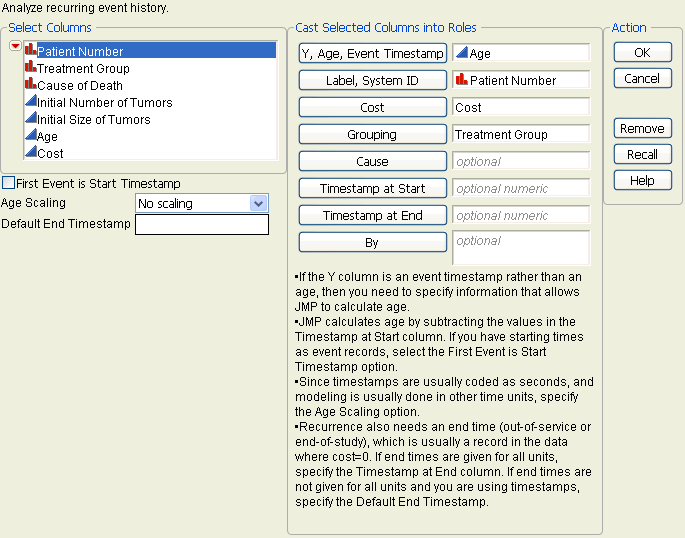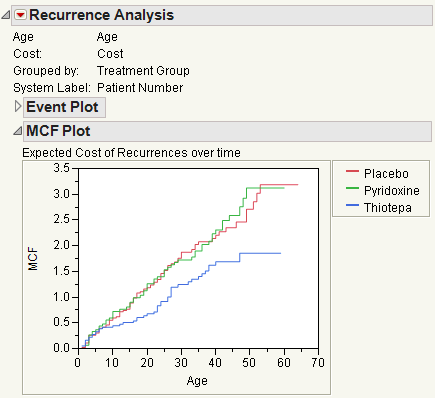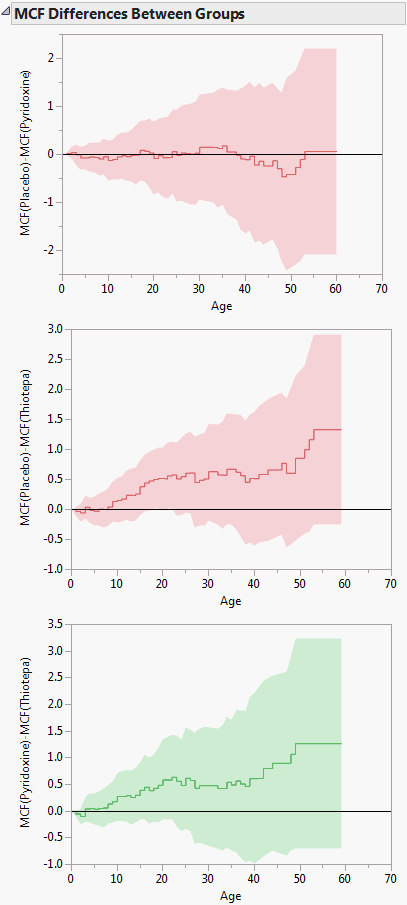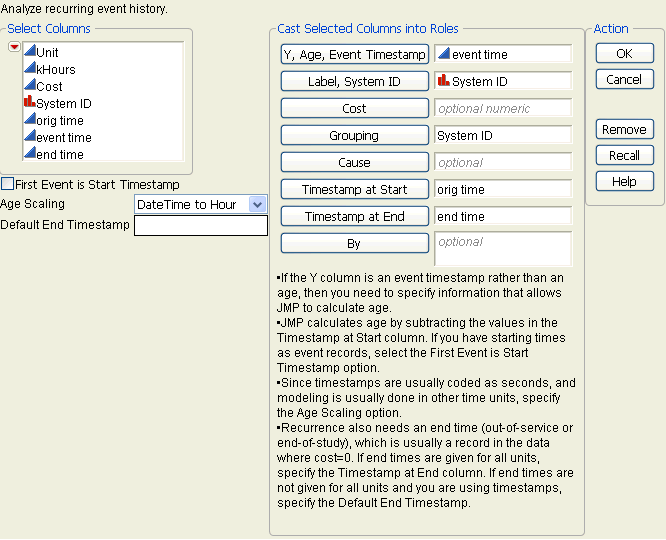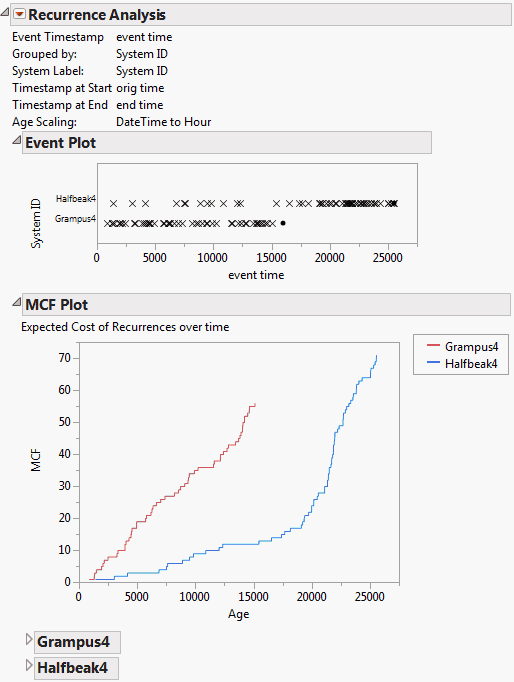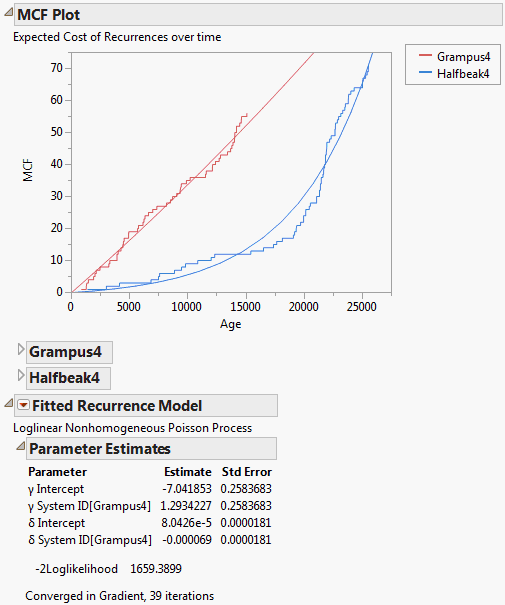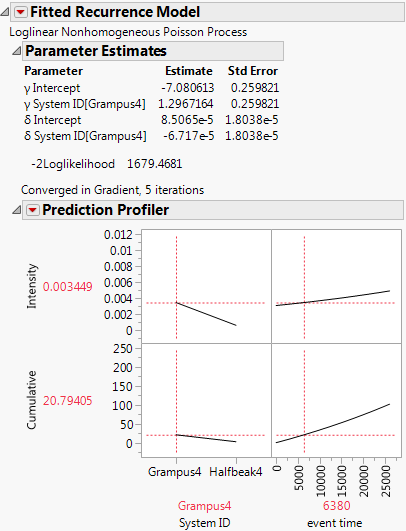The sample data file Bladder Cancer.jmp contains data on bladder tumor recurrences from the Veteran’s Administration Co-operative Urological Research Group. See Andrews and Herzberg (1985, table 45). All patients presented with superficial bladder tumors, which were removed upon entering the trial. Each patient was then assigned to one of three treatment groups: placebo pills, pyridoxine (vitamin B6) pills, or periodic chemotherapy with thiotepa. The following analysis of tumor recurrence explores the progression of the disease, and whether there is a difference among the three treatments.
Bladder Cancer MCF Plot shows the MCF plots for the three treatments.
To examine if there are differences among the treatments, select the Plot MCF Differences command from the platform red triangle menu to get the following plots.
To determine whether there is a statistically significant difference between treatments, examine the confidence limits on the differences plot. If the limits do not include zero, the treatments are convincingly different. The graphs in MCF Differences show there is no significant difference among the treatments.
The sample data table Diesel Ship Engines.jmp contains data on engine repair times for two ships (Grampus4 and Halfbeak4) that have been in service for an extended period of time. See Meeker and Escobar (1998). You want to examine the progression of repairs and gain a sense of how often repairs might need to be done in the future. These observations can help you decide when an engine should be taken out of service.
|
1.
|
|
2.
|
Select rows 57 and 129 and select Rows > Exclude/Unexclude.
|
|
3.
|
Select Analyze > Reliability and Survival > Recurrence Analysis.
|
|
5.
|
Click OK.
|
|
6.
|
Select Fit Model from the red triangle menu next to Recurrence Analysis.
|
|
7.
|
In the Recurrence Model Specification, select the Loglinear Nonhomogeneous Poisson Process.
|
|
8.
|
Add the System ID column as both a Scale Effect and a Shape Effect.
|
|
9.
|
Click Run Model.
|
|
10.
|
Select Profiler from the red triangle menu next to Fitted Recurrence Model.
|
